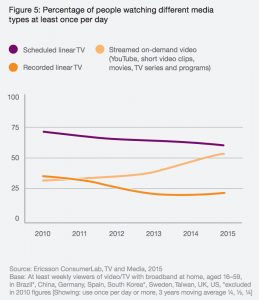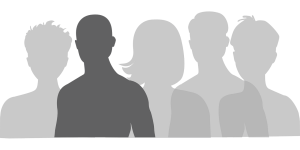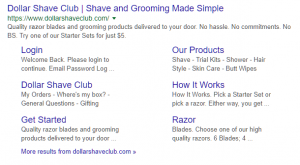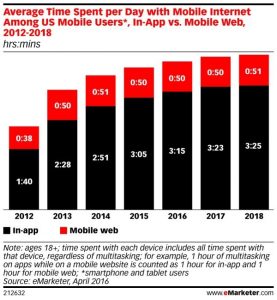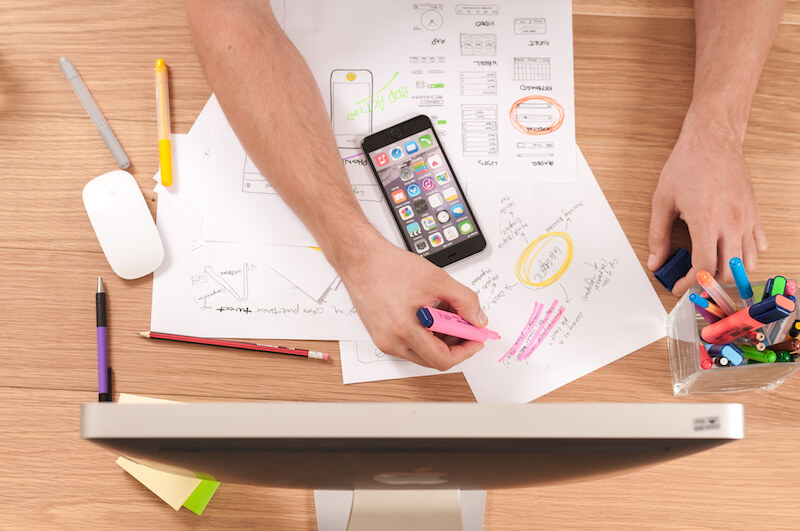
What if I were to tell that there’s a secret productivity troll running loose in your office?
You can’t see or hear him, but he’s there, sabotaging your team’s ability to meet its goals, and sapping your company of precious resources. He thrives on company money, and each day he gobbles it up.
The troll has a name. It’s Distraction.
Ok, the troll is metaphorical, but the effects of workplace distractions are no less real.
The average worker is bombarded by constant distraction: email, slack chats, gchats, text messages, Facebook messages, Instagram live, Snapchat notifications, loud co-workers.
As The New York Times reported, a UC Irvine study found that a typical office worker gets interrupted every 11 minutes – yet it takes an average of 25 minutes to return to the original task
See the problem here?
Most of us tend to focus on proactive things. We ask ourselves, what can my team and I do to get better? What new skills can we learn? What new software or tool do we need?
But sometimes it’s not about what you should be doing, but what you should stop doing.
As SnackNation CEO Sean Kelly is fond of saying, if you want to go fast, you’ve got to release the e-brake before you can step on the gas.
Eliminating distractions is a great place to start. So let’s dive in.
Here are the top 13 workplace distractions and how to fix them – so you can get rid of that troll for good.
1. Noise
Remember that open office configuration that you fought so hard for? It seemed like a great idea at the time, the perfect way to increase collaboration, stimulate new ideas, and de-emphasize hierarchy in your organization.
Or so the theory goes.
The proliferation of these types of offices has been met with some resistance. In fact, we’re in the midst of a backlash against the open-office concept. The biggest reason? Noise.
While the benefits of knocking down those cubicle walls are real, it’s true that open offices can be messy, noisy affairs. The open-office is great for work that requires high levels of communication and collaboration, but not so great for focused work.
A 2011 review of more than 100 studies by organizational psychologist Matthew Davis found that open offices hurt attention spans, creativity, and productivity for certain types of work.
The Fix – quiet the interoffice cacophony with headphones
Before you start building back those walls you so dutifully tore down, there are ways to reap the benefits of an open office while still enabling your team to get things done.
One easy fix is to wear headphones.
Headphones are a way to signal to team members that you are deep in focused work and not to be bothered.
Prefer to work without music? Try this:
Just wear headphones and don’t play any music. I’ve tested this and notice that less people interrupt me as compared to when I’m not wearing headphones.
White noise apps like Noisli (which I’m using right now) also help filter out chatty co-workers.
Likewise, music has been shown to increase focus and productivity by bringing your mind back to the present moment. Of course, not all music helps you focus equally.
Music without lyrics works best. That’s why we created the SnackNation Ultimate Productivity Playlist, which features more than 14 hours of lyric-free instrumental jams from artists like DJ Shadow and KAYTRANADA, guaranteed to help you focus and get things done.
(Be sure to follow this playlist on Spotify as we are constantly adding new music.)
2. Smartphones

They’re a blessing and a curse. Smartphones have enabled us to be more connected than we’ve ever been, freed us to work on the go, and made getting lost a thing of the past. But along with these benefits comes some steep downsides.
In his presentation on the “drug of distraction,” SnackNation CEO Sean Kelly makes a strong case that the little computer in our pockets is actually the world’s most perfect distraction machine.
Part of the reason has to do with our brain chemistry. Doing things like checking Facebook or text messages releases dopamine, a feel-good chemical that rewards us for completing tasks.
The problem is that the pleasure we get from dopamine is fleeting, which leads us to trigger those dopamine releases more frequently.
That’s why it’s so tempting to check our phones constantly. Our phones are a known dopamine source, an easy fix for flooding our brains with temporary pleasure. In fact, phones and apps – with their pop-up notifications – are designed to trigger this exact behavior.
The Fix – quiet those notifications with do not disturb mode
Since many of us use our smartphones during business hours to take calls or to stay connected while out of the office, powering down our phones during the day just isn’t an option. Luckily, you can silence notifications for those times you work needs your full concentration.
Apple’s iPhone has a fantastic do not disturb mode that turns off most notifications, enabling you to keep your phone at your desk without constant interruptions. Android has a similar mode. Here’s how to get the most out of it.
3. Multitasking
We all think we can do it. We take calls while we work on spreadsheets. We read articles while we write them. We surreptitiously order lunch while we’re in an important staff meeting.
The thing is, we’re wrong. Our brains just aren’t built for multitasking, and we’re all terrible at it.
In a presentation on productivity hacks, SnackNation Head of Sales Kevin Dorsey made the point that the term “multitasking” is a misnomer, and we should consider dropping it from our vocabulary altogether. When we attempt to multitask, we’re purposefully distracting ourselves from our most important tasks.
Here’s a video of Kevin’s presentation:
Multitasking just means you’re doing a crappy job at more than one thing.
The Fix – prioritize, prioritize, prioritize
Once you accept that you have to focus on one task at a time, the question becomes, which one?
This is where prioritization and disciplined planning come in. Identify your highest leverage activities first, and attack them with gusto.
Task management software like Asana is a great way to set priorities and track your progress on your most important work.
Likewise, Chrome extensions like Prioritab put your most important tasks at your fingertips – and remind you that there’s work to be done whenever you open a tab to go to time-wasting sites like Facebook.
4. Interruptions
Another consequence of open office layouts is the propensity for team members to interrupt each other to ask basic questions.
This “shoulder tapping” is actually one of the most common distractions identified by engineers on Quora.
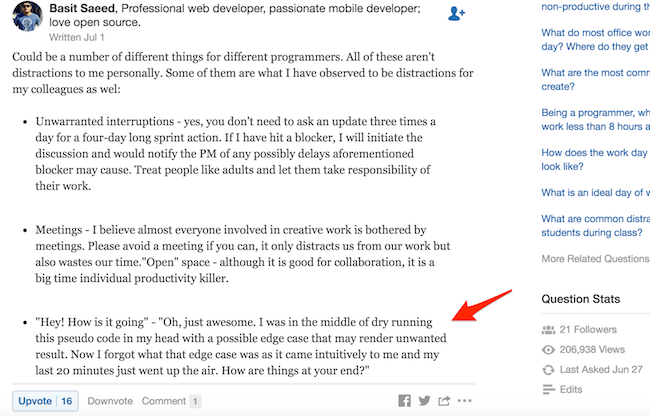
The Fix – send strong signals
If you want to keep your open office layout (and we recommend that you do), create a system with which team members can signal to each other when they are engaged in focused work. Signs, flags, or, again, wearing headphones, are all ways to send the “do not disturb” signal.
Culture provides another solution. An environment that values both thoughtful communication and an awareness that everyone’s time is valuable can have a huge impact.
As Quora user Brian Madigan explains:
“I don’t mind answering questions at all. It’s my job as a lead programmer.… [But] walking up with some vague side-attack question is going to waste a lot of time. Be direct, figure out what you need, provide context and ask direct questions.”
5. Clutter
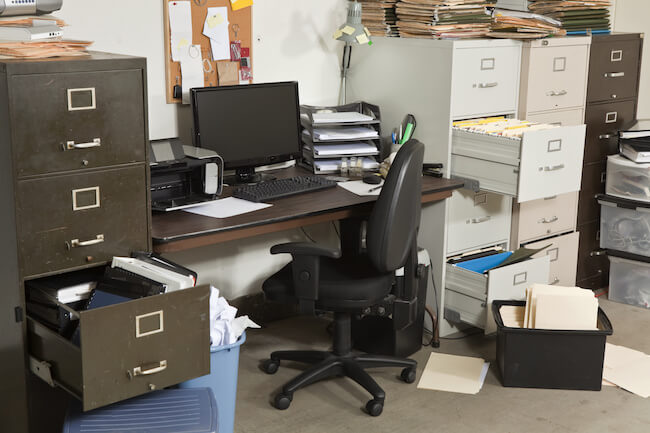
If you work at a messy desk, you have a couple things working against you.
That’s because your brain is wired to react to its surroundings. A cluttered workspace will result in a cluttered mind.
And as Lifehacker recently pointed out, your brain also has a proclivity to bounce around when things get tough. The more challenging the task, the more likely your mind is to wander.
The point is, you can try to quiet your mind and focus either by exercising self-control (difficult), or by eliminating distracting elements from the context of your work environment (much easier).
The Fix – optimize your desk for minimal distraction
Don’t make it easy for your brain to fixate on something other than the task at hand. It all starts with cleaning up your workspace.
Minimalism is key here. Remove the clutter from your desk, and only keep things that contribute to your work.
6. Hunger
When it comes to performance, you’d be hard-pressed to find something more impactful than nutrition.
And we’re not talking about athletic performance. Nutrition is extremely critical for cognition and focus. Most of us don’t realize that brain cells actually require twice as much energy as the rest of the cells in our bodies.
In other words, your brain need sustainable energy in order to run at peak performance.
Your typical sugary vending machine food – like candy bars and danishes – create energy spikes and crashes that inhibit our ability for prolonged concentration, and actually make the problem worse.
The Fix – fuel your team with proper nutrition
Avoid foods with processed sugars and unhealthy fats, both of which lead to energy crashes and sluggishness. Stick to foods rich in protein, fiber, healthy fats, and complex carbs to help maintain maximum focus.
Save time and money by providing your employees with healthy snacking options in the office. Your team will appreciate the perk, and they’ll have the nutrition they need for focused work.
Plus, they won’t waste time leaving work in search of something to eat when those two o’clock hunger pangs kick in.
Here are some quick tips on how to snack at work the right way:
7. Anxiety
According to the National Institute of Mental Health, anxiety disorders are the most common form of mental illness in the U.S., affecting an estimated 40 million adults in the United States. That’s roughly 18% of the population.
Even before it becomes a full blown disorder, anxiety is a fact of life for many Americans – and the rapid pace and increasing connectedness of our work lives isn’t helping matters.
One of the little known side-effects of anxiety is its effect on concentration. Moderate to severe anxiety degrades short term memory and makes concentration almost impossible.
The Fix – active rejuvenation
Anxiety is a byproduct of prolonged stress. And while a degree of healthy stress is good for most of us, it starts to become a problem when your stress doesn’t have a release valve.
The solution is active rejuvenation.
Nap pods, meditation rooms, and tranquility waterfalls, are all great ways to encourage employees to actively rejuvenate. Check out our post on creating a Zen office space for more ideas.
Also, here’s an infographic that shows you some 6 simple tips to reduce your stress at work:

8. Attention Span

A Canadian study made headlines worldwide by concluding that modern human beings now have shorter attention spans than goldfish – thanks, of course, to our smartphone addictions.
But even without the deleterious effect of our smartphone culture, our concentration has always had its limits.
That’s because concentration and focus are finite abilities. Think of concentration like the tank of gas in your car. Each day you wake up with a full tank. If we’re not careful, you can use it all up on the wrong things before has even begun.
The Fix – eat the frog first
This idea comes from Brian Tracy’s popular book Eat That Frog! The concept is to tackle your highest leverage activity first, when your energy and focus are at their peak. (Often this is also the thing you’re dreading.)
By eating the frog, you create an early win, and can use the momentum to propel you through the rest of your day.
You can also try the Pomodoro Technique, which uses the idea of working in short intervals (usually 25 minutes) separated by short breaks (5-10 minutes).
This digital Tomato Timer is perfect for using this productivity technique.
9. Email

For a lot of us, checking email is the first thing we do in the morning.
We answer high priority requests, respond to questions, browse articles from the various mailing lists to which we subscribe, and delete junk mail. From there, we have our inbox open all day, and when a new email pops up, we click into it right away.
Often, this isn’t our fault. Many of us have been taught that being responsive on email is an essential part of our being a professional.
But as it turns out, this type of engagement with our inbox is a surefire way to torpedo our productivity. Responding to emails is, by its very nature, reactive.
The many threads and conversations we have in emails pull us in multiple directions, and distract us from the important work still on our plate.
The Fix – batch process your email
Instead of living in your inbox, designate set times to respond to emails, and stick to it.
I usually start my day with the activity that requires my highest level of concentration around 8 am. Once I’ve made significant progress (usually about an hour later), I allow myself to scan my inbox for any emergencies. If there are none, I continue working, and respond to emails at set times throughout the day – usually around 11 am, 3 pm, and once more before I leave the office.
It turns out, most of those emails that you think require your immediate attention really don’t, and if someone needs to get a hold of you to answer a questions, they usually find a way to.
10. Slack
Some of you might be surprised to see Slack on this list. Email – sure that makes sense. But didn’t Slack solve email?
Not exactly.
Slack is the enterprise level chat app that has been touted over the last few years as a veritable email killer. Slack promises to avoid the pitfalls of email (too time consuming, too confusing) while increasing transparency and preventing information silos. Articles across the blogosphere hailed the service’s ability to reduce your inbox by as much as 80%.
But, like any powerful tool, Slack’s utility has its limits.
Slack was one of the most oft-cited culprits in a Quora thread about workplace distractions. While Slack is without a doubt an amazing collaboration tool, much of the information contained in emails simply migratedsto Slack.
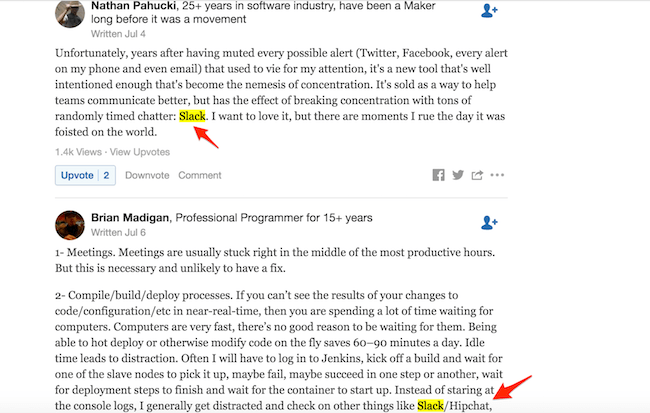
And of course, living in Slack is just as bad – if not worse – than living in your inbox.
The Fix – make Slack work for you
Like open offices, you don’t want to throw out the baby with the bathwater. When deployed right, Slack is still an amazing collaboration tool. The key is to set yourself up for success by turning off badges and notifications, creating do not disturb hours, and muting channels.
Here’s a handy guide for making your Slack experience do more good than harm.
11. Decision Fatigue
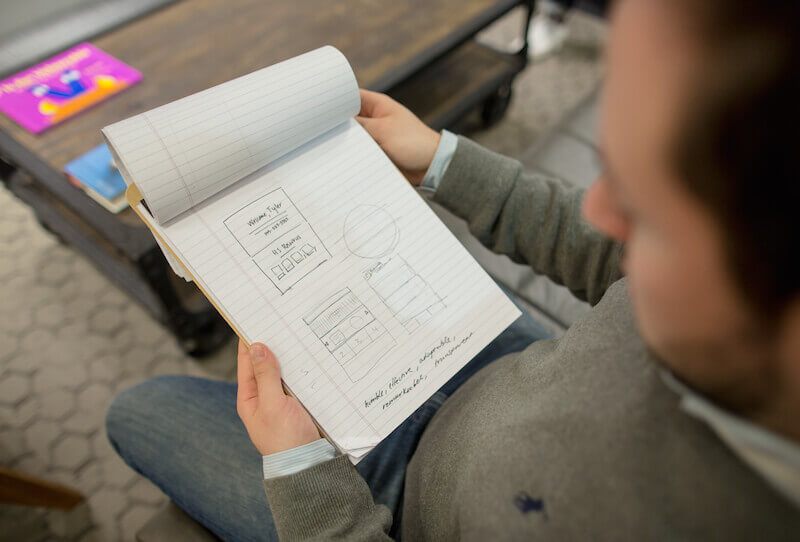
Decision fatigue is what happens to your brain when you have to make too many decisions in quick succession.
Like concentration, our decision-making ability reserves can get low and run out. (If you’ve ever planned a wedding you know that this struggle is real.)
As The New York Times Magazine described the phenomenon in 2011, “No matter how rational and high-minded you try to be, you can’t make decision after decision without paying a biological price.” This price comes in the form of irritability, lack of focus, or inaction.
The Fix – develop a routine you can stick to
The idea here is to eliminate as many decisions from your day as possible. It’s why leaders like Steve Jobs, Mark Zuckerberg, and President Barack Obama all famously wore the same clothes every day.
When you already know exactly what you want to wear, that’s one less decision you have to make that morning, and your decision-making energy can be allocated to more pressing questions.
12. Meetings
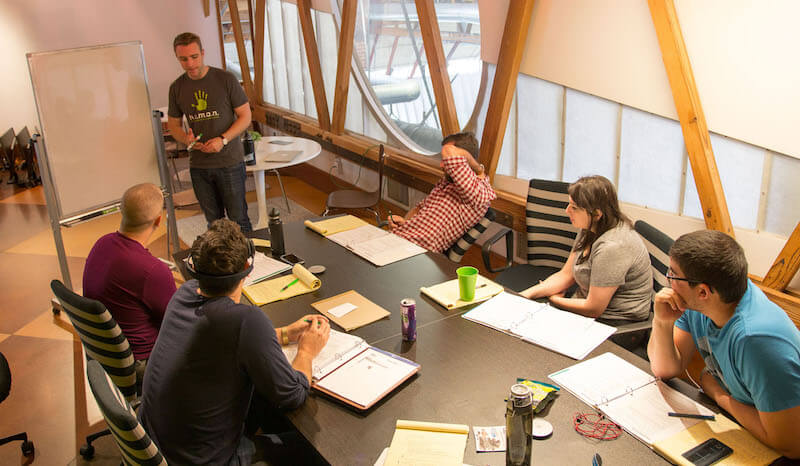
Meetings are notorious time-sucks – the place where we talk about the work we should be doing instead of actually doing it.
Snark aside, some meetings are unavoidable. So how do you find the right balance?
The Fix – hold better meetings
Holding good meetings is a bit of an artform. Here are a few tips to make the most out of your time:
- Appoint a leader – make sure someone is keeping the meeting on topic
- Keep a time limit – set a time limit and adhere to it
- Record action items and assign owners – make sure you come away with next steps so that your great ideas don’t stay hypothetical
To really drive the point home, try this Meeting Calculator from Jell. It taps into your google calendar to tell you how much of your life you’re wasting in meetings.
13. Social Media
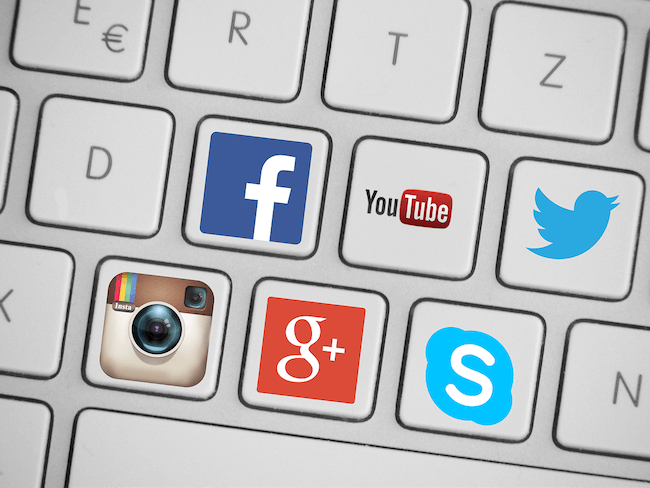
As we’ve already discussed, checking social media is habit forming – literally. The chemicals that your brain release when you do things like scroll through Facebook affect your brain in a very similar way as opioids like heroin.
The Fix – website blockers
The best way to break a habit is to make it inaccessible.
Chrome extensions like DistractOff take the temptation away and help you avoid the impulse for mindless procrastination. Or try a distraction-free writing tool.
Another ingenious idea is to hijack your Facebook habit with something more productive. Every time you find yourself reaching for your phone, stop yourself and reach for a book instead.
It may seem like it takes a lot of willpower, but it’s remarkably easy to do. Start by keeping your phone sitting on top of that leadership book you’ve been meaning to read. Soon, your breaks will be filled with productive work instead of mindless scrolling.
Conclusion
Distractions are a fact of life, but there are definitely ways to optimize your office and minimize their effect.
The key is to eliminate as many as possible. Rather than engage in a daily struggle with your own biology, avoid as many as possible by removing those temptations in the first place.
What are some distractions that we missed, and how does your office deal with them? Let us know in the comments below.
Business & Finance Articles on Business 2 Community(94)
Report Post
